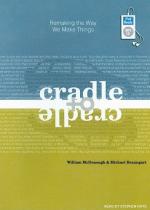|
This section contains 1,054 words (approx. 3 pages at 400 words per page) |

|
Waste Equals Food Summary and Analysis
In the natural world, systems replenish each other, as with the cherry tree. It is a cradle-to-cradle model, because even when things die, they provide a clean, natural environment for new life. Early nomads and early agriculture follow a similar model. Certain cultures, such as Rome, turn away from this model and deplete the landscape with tree-felling and nonsustaining agriculture. The same things happen when great cities arise in America, when the surrounding farmlands are depleted. Soon "nutrients," such as food and other raw materials, become transferred from localities instead of remaining local. Agriculture becomes industrialized, but this threatens the soil as well as adding toxins to the local environments.
Not all civilizations ignore nutrient flows. The Nile River cultures waited the overflow every year to revitalize the soil with nutrients. They also stored food surpluses for...
(read more from the Waste Equals Food Summary)
|
This section contains 1,054 words (approx. 3 pages at 400 words per page) |

|




